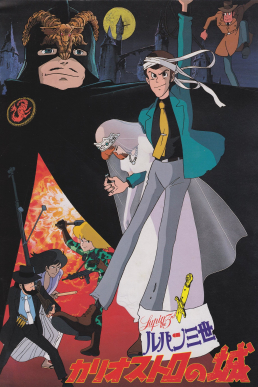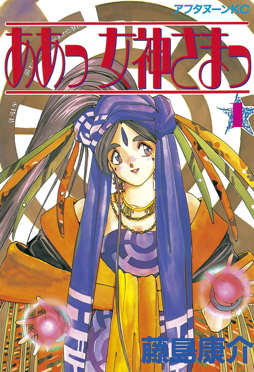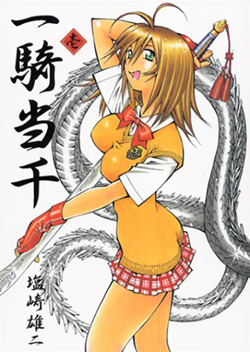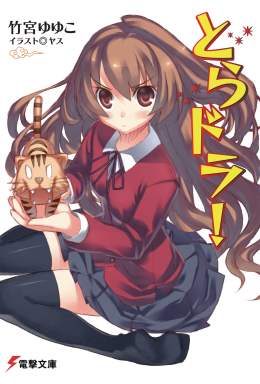Anime is hand-drawn and computer-generated animation originating from Japan. Outside Japan and in English, anime refers specifically to animation produced in Japan. However, in Japan and in Japanese, anime describes all animated works, regardless of style or origin. Many works of animation with a similar style to Japanese animation are also produced outside Japan. Video games sometimes also feature themes and artstyles that can be considered as "anime".

Lupin III: The Castle of Cagliostro is a 1979 Japanese animated action-adventure comedy film co-written and directed by Hayao Miyazaki, with animation produced by Tokyo Movie Shinsha (TMS). It is the second feature film featuring Monkey Punch's master thief Lupin III, from his manga series of the same name. The film was Miyazaki's feature-length directorial debut after having previously worked as an animator for Toei Animation and Telecom Animation Film and directing several television shows, including Lupin the Third Part I.
Original video animation, abbreviated as OVA and sometimes as OAV, are Japanese animated films and series made specially for release in home video formats without prior showings on television or in theaters, though the first part of an OVA series may be broadcast for promotional purposes. OVA titles were originally made available on VHS, later becoming more popular on LaserDisc and eventually DVD. Starting in 2008, the term OAD began to refer to DVD releases published bundled with their source-material manga.

Oh My Goddess!, or Ah! My Goddess! in some releases, is a Japanese manga series written and illustrated by Kōsuke Fujishima. It was serialized in Kodansha's seinen manga magazine Monthly Afternoon from September 1988 to April 2014, with its chapters collected in 48 tankōbon volumes. The series follows college sophomore Keiichi Morisato and the goddess Belldandy who moves in with him in a Buddhist temple; after Belldandy's sisters Urd and Skuld move in with them, they encounter gods, demons and other supernatural entities as Keiichi develops his relationship with Belldandy. The manga series has been licensed for English-language release by Dark Horse Comics.

Kimba the White Lion, known in Japan as Jungle Emperor, is a Japanese shōnen manga series written and illustrated by Osamu Tezuka which was serialized in the Manga Shōnen magazine from November 1950 to April 1954. An anime based on the manga was created by Mushi Production and was broadcast on Fuji Television from 1965 to 1967. It was the first color animated television series created in Japan. It began airing in North America from 1966. The later series was produced by Tezuka Productions.
Lupin III, also written as Lupin the Third, Lupin the 3rd, or Lupin the IIIrd, is a Japanese media franchise created by Monkey Punch in 1967. The series follows the endeavors of master thief Lupin III, grandson of gentleman thief Arsène Lupin, joined by his criminal gang. The original Lupin III manga began in Weekly Manga Action on August 10, 1967. The series' success spawned a media franchise that includes numerous manga, seven animated television series, eleven theatrically released animated films, two live-action films, five OVA works, twenty-seven animated television specials, two musicals, and several video games.

Hideaki Anno is a Japanese animator, filmmaker and actor. His most celebrated creation, the Evangelion franchise, has had a significant influence on the anime television industry and Japanese popular culture, with many deeming Anno as one of the medium's first auteurs. Anno's style is defined by his postmodernist approach and the extensive portrayal of characters' thoughts and emotions, often through unconventional scenes presenting the mental deconstruction of those characters.
The history of anime can be traced back to the start of the 20th century, with the earliest verifiable films dating from 1912. Before the advent of film, Japan already had a rich tradition of entertainment with colourful painted figures moving across the projection screen in utsushi-e (写し絵), a particular Japanese type of magic lantern show popular in the 19th century. Possibly inspired by European phantasmagoria shows, utsushi-e showmen used mechanical slides and developed lightweight wooden projectors (furo) that were handheld so that several performers could each control the motions of different projected figures.

Osamu Tezuka was a Japanese manga artist, cartoonist and animator. Born in Osaka Prefecture, his prolific output, pioneering techniques and innovative redefinitions of genres earned him such titles as "the Father of Manga", "the Godfather of Manga" and "the God of Manga". Additionally, he is often considered the Japanese equivalent to Walt Disney, who served as a major inspiration during Tezuka's formative years. Though this phrase praises the quality of his early manga works for children and animations, it also blurs the significant influence of his later, more literary, gekiga works.

The Prince of Tennis is a Japanese manga series written and illustrated by Takeshi Konomi. The manga was serialized in Shueisha's Weekly Shōnen Jump from July 1999 to March 2008, with its chapters collected in 42 tankōbon volumes. Viz Media licensed the manga for English release in North America.

Bleach is a Japanese anime television series based on Tite Kubo's original manga series of the same name. It was produced by Studio Pierrot and directed by Noriyuki Abe. The series aired on TV Tokyo from October 2004 to March 2012, spanning 366 episodes. The story follows the adventures of Ichigo Kurosaki after he obtains the powers of a Soul Reaper—a death personification similar to the Grim Reaper—from another Soul Reaper, Rukia Kuchiki. His newfound powers force him to take on the duties of defending humans from evil spirits and guiding departed souls to the afterlife. In addition to adapting the manga series it is based on, the anime periodically includes original self-contained storylines and characters not found in the source material.

Ikki Tousen, also known as Battle Vixens in North America, is a Japanese manga series written and illustrated by Yūji Shiozaki. Loosely based on the classic 14th century Chinese novel Romance of the Three Kingdoms, the series revolves around an all-out turf war in the Kantō region of Japan where fighters known as Tōshi from seven schools battle for supremacy. The story centers on Hakufu Sonsaku, a fighter who transfers to Nanyo Academy, one of the seven schools involved in the turf war.

Inukami! is a Japanese light novel series written by Mamizu Arisawa, with illustrations by Kanna Wakatsuki. The series originally started serialization in volume seventeen of ASCII Media Works' now-defunct light novel magazine Dengeki hp on April 18, 2002. Four more chapters were published until the first bound novel of the series was released, though more chapters were later serialized in the magazine. Fourteen main novels, plus two additional bonus novels with illustrations by Mari Matsuzawa, were published by ASCII Media Works under their Dengeki Bunko label between January 10, 2003 and December 10, 2008. The series revolves around a dog goddess named Yōko and her master Keita Kawahira as they fight against various troublesome spirits. Several more inukami besides Yōko also play an important role, most notably the inukami of Kaoru Kawahira.
In Japan, late night anime refers to anime series broadcast on television late at night or in the early hours of the morning, usually between 11 PM and 6 AM local time.

Toradora! is a Japanese light novel series by Yuyuko Takemiya, with illustrations by Yasu. The series includes ten novels released between March 10, 2006, and March 10, 2009, published by ASCII Media Works under their Dengeki Bunko imprint. Three volumes of a spin-off light novel series were also created, aptly titled Toradora Spin-off!. A manga adaptation by Zekkyō started serialization in the September 2007 issue of the shōnen manga magazine Dengeki Comic Gao!, published by MediaWorks. The manga ended serialization in Dengeki Comic Gao! with the March 2008 issue, but continued serialization in ASCII Media Works' manga magazine Dengeki Daioh with the May 2008 issue.

One Piece is a Japanese anime television series produced by Toei Animation that premiered on Fuji TV in October 1999. It is based on Eiichiro Oda's manga series of the same name. The story follows the adventures of Monkey D. Luffy, a boy whose body gained the properties of rubber after unintentionally eating a Devil Fruit. With his crew, named the Straw Hat Pirates, Luffy explores the Grand Line in search of the world's ultimate treasure known as the "One Piece" in order to become the next Pirate King.

Lupin the 3rd Part I is a Japanese anime television series produced by Tokyo Movie. Part of the Lupin III franchise, it is the first anime television adaptation of the Lupin III manga series created by Monkey Punch. The series was originally broadcast as simply Lupin III on Yomiuri TV between October 24, 1971 and March 26, 1972. Among English-speaking fans, this series was commonly known as the "Green Jacket" series in reference to Lupin's outfit, but more recently it is now known as "the first Green Jacket" series because of the outfit's return in Part 6.

Lupin the Third: Pilot Film is a Japanese animated short film directed by Masaaki Ōsumi, which was created around 1969. It is the first animated adaptation of the Lupin III manga series, created by Monkey Punch in 1967. The 12-minute film was created by Tokyo Movie and intended to generate interest and secure funding for a larger production. Around 1971 it was reworked as a television pilot with new voice actors and the series was picked up by Yomiuri Television, leading to Lupin the Third Part I.












